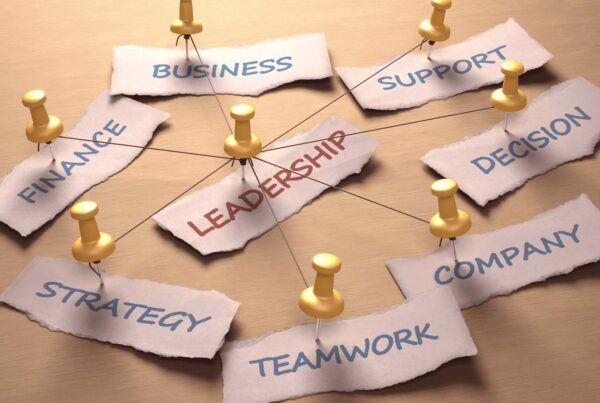Introduction
Everybody communicates in one way or another. Communicating clearly is essential to both corporate and leadership success. This paper will review and comment on two communication channels used in my workplace. Moreover, these channels will describe the key elements of the communication model described by Schermerhorn, Hunt and Osborn in their text, Organizational Behavior.
Issues
In order to discuss the topic of communications, it is essential to understand the communication process. Communication is the exchange of messages conveying information, ideas, attitudes, emotions, opinions, or instructions. The exchange of messages is between the source and the receiver. Each of these messages has attached meanings. These messages must then be sent via a communication channel. A channel is the medium through which a message is passed. Effective communication involves the selection of an appropriate channel for a specific purpose. Some examples of communications channels:
* Face to face
* E-mail
* Memo
* Letter
* Voice mail
* Reports
* Newsletters
Once the message is delivered, the receiver must decode it. Good communication occurs when both the encoded and decoded message have mutual meaning and understanding.
Occasionally, effective communication fails due to noise. Schermerhorn, Hunt & Osborn define noise as “…anything that interferes with the communication process” (2000, p. 349).
During the communication process, feedback may be requested. Feedback is defined as, “the process of communicating how one feels about something another person has done or said” (Schermerhorn et al., 2000, G-4).
Example One – Corporate Newsletter
Our organization (source) communicates with our clients (receiver), on a regular basis, via a newsletter (channel). The newsletter contains technical information (message) that can be used by our clients. The company determined that the newsletter was both an effective and efficient communication channel. The newsletter is considered effective because it reports industry specific information to our pulp and paper clients. In the scientific realm, we feel that our intended meaning equals the perceived meaning. In the event this is not true, our clients are advised to provide feedback. The newsletter is efficient because it is a low cost method of communicating with our large client base.
Specialists from our company are chosen to write industry specific articles for the newsletter. This is done to eliminate (noise) from the communication process. Our specialists use appropriate industry jargon to effectively communicate scientific processes to our clients. Every department at our company contributes to the newsletter in this manner. In doing this, we eliminate the chance for semantic problems and overcome a major communication barrier. It is intended that our readership fully understands our recommendations and research.
To ensure dialogue with our clients, every article in the newsletter lists the author’s phone number and email address. Feedback through comments and opinions are encouraged and always welcomed. They allow us the opportunity to better serve our clients. We have researched and introduced new testing methods as result of client comments. The new testing methods have allowed our company to better serve the pulp and paper industry. Moreover, these new methods have provided new sources of revenue generation for our company. The feedback process has provided a win-win situation for both industry and service provider.
Many of our clients have called or written our company, to advise us that they welcome the newsletter as an effective mode of communication and find the material (message) timely and useful. The clients are specific in their praise of the opportunity to contact the article writer to discuss and question the information provided.
Example Two – Performance Reviews
A performance appraisal is another form of communication channel. This channel is more complex because it involves face-to-face and written messages. This channel also incorporates both verbal and nonverbal symbols (body language which includes gestures, and facial expressions). The interviewer is the sender of the message and the interviewee is the receiver.
The interview process begins with the manager completing a formal, written appraisal on an employee’s performance. Prior to the formal interview, the employee is also given the same performance appraisal document to complete a self-analysis. A meeting is then arranged for the performance review.
Eliminating Communication Barriers
The performance review is considered two-way communication since it originates with the sender, goes to receiver and back again. The communication originates in written form, whereas feedback is usually verbal. When conducting a performance review, managers are encouraged to be active listeners. Active listening skills include:
* Empathizing
* Analyzing
* Synthesizing
A word of caution, “Misunderstandings are caused by wishful listening – hearing only what you want hear” (Heller, 1998, p. 14).
When encoding messages, it is important to understand cultural differences. Our company employs various cultural groups. As Heller points out, “The nonverbal language of gestures varies from country to country. Some to watch for include the North American thumb and forefinger gesture for OK (may insult a Dane); pointing with a finger (considered rude in China)…” (1998, p. 12).
Effective communication will always take into account cultural differences at our company. There are many Asians in our company, failure to respect their culture will affect relationships and possibly work performance. Managers have been instructed never to point at the employee when in dialogue with them. Ethnocentrism is discouraged as it acts as a communication barrier.
Interviews must be conducted free of distractions. This means, no telephone calls or drop-in visitors. Failure to respect the importance of privacy sends a nonverbal message to the interviewee that the interview time and process are unimportant.
Proxemics are utilized in configuring the interview environment. Our manager’s are encouraged to avoid furniture barriers between themselves and the employee. It is recommended that the manager sit adjacent to or at a forty-five degree angle to the employee. By doing this, barriers to communication are removed.
Finally, the managers are encouraged to use a consultative approach in the interview process. They are to be conversational but positive, discussing specific activities and issues. Asking open questions, listening, reflecting back what they hear, and responding appropriately.
Conclusion
Communication is the exchange of messages conveying information, ideas, attitudes, emotions, opinions, or instructions. The process of using effective and efficient communications is essential to the success of interpersonal communications. In addition, effective communication involves the selection of an appropriate channel. Equally important, is the elimination of noise in both the channel and feedback segments of the communication process.
In all of this, one point remains undeniable: communicating clearly is essential to both corporate and leadership success.
What have you found or used in your organization that has added value to your communication process?
Works cited
Heller, R. (1998). Communicate clearly. New York, NY: DK Publishing.
Schermerhorn, J.R., Jr., Hunt, J.G., & Osborn, R.N. (2000). Organizational behavior. New York, NY: Wiley.







